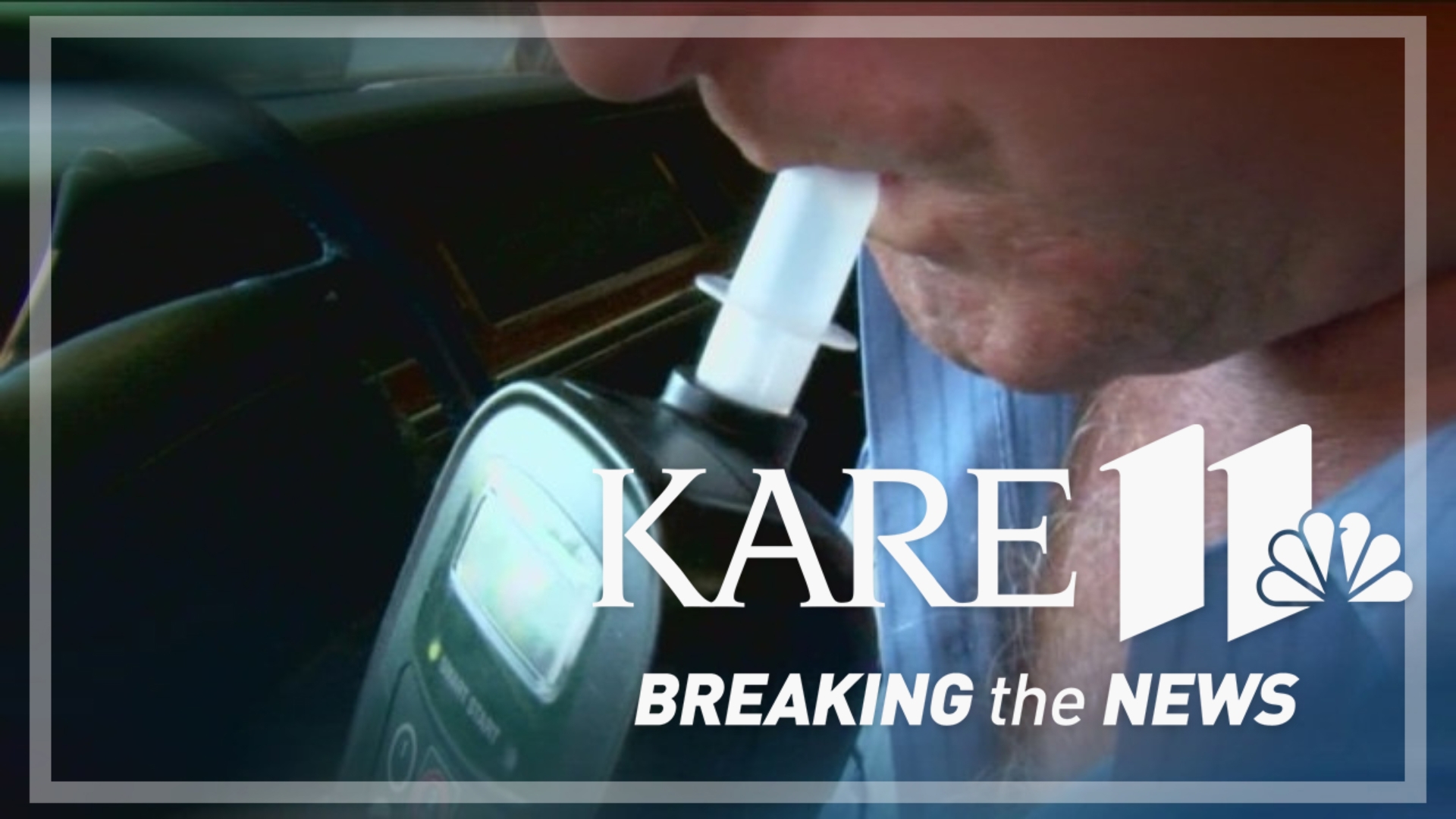ST. LOUIS PARK, Minn. — As we learn more about the man charged with the deadly crash at Park Tavern on Sunday night, many are asking how someone with a long history of DWI convictions was ever allowed to be behind the wheel in the first place.
"I think the opening, obvious question is why was he driving with that record?" said attorney Michael Bryant, managing partner of Bradshaw and Bryant. "With five DWI's, how can you be on the road?"
According to Hennepin County Attorney Mary Moriarty, Steven Bailey, 56, had a blood-alcohol level of .325 when the crash occurred — more than four times the legal limit to drive in Minnesota.
He now faces two counts of criminal vehicular homicide and nine counts of criminal vehicular operation in the crash that killed two, including a tavern employee, and injured nine others.
How Bailey was able to regain his license is due, in part, to the timing of his previous DWIs. His first arrest and conviction took place in Wisconsin in 1985, when Bailey was 17 years old. His most recent DWI took place in Hennepin County in 2014.
In the decade since that 2014 arrest, and later conviction, Bailey appeared to complete everything the state, and courts, asked of him.
"His license was revoked twice," Bryant said. "And there was a long period from the last time that he had a DUI until the present - which doesn't make this less of a horrible event - but he went through the steps that he needed to go through in order to get that license restored."
Bailey's road back to driving began with an ignition interlock device installed on his car in Oct. 2014.
His driving record remained clean until Sept. 2019 when the ignition interlock - which is a device that requires a driver to blow alcohol-free before allowing the car to start - electronically registered a violation. With that violation, DVS again canceled Bailey's driver's license but he successfully appealed in court, claiming the interlock device in his vehicle was defective.
According to sworn testimony, Bailey had been sober since June 2014, but when he blew into the device it at first registered a concentration of 0.181, then 0.038, then 0.0 just 15 minutes later. The judge agreed the device must have been faulty.
DPS confirms that Bailey's ignition interlock program was in effect between 2014 and 2020. In 2023 he renewed his license and was listed as a valid driver in the state database at the time of Sunday's crash.
"Six years on Interlock is a long time and, you know, if you don't have any violations and don't have any, you know, issues during that, that time period, you're not drinking while you're driving," Bryant said. "This is all based upon a system that's set up with the hope that people can rehabilitate themselves and they can restore their rights to drive. With that (hope) comes the incentive to regain a license and insurance coverage so that society is protected in ways that you wouldn't be if a person was driving without the license and definitely driving without insurance."
It's unclear what might have happened with Bailey after his interlock device was legally removed in 2020, but experts say the timing is familiar.
"In 2020, the end of 2019 and the beginning of 2020, we saw a sharp increase in injuries and deaths related to impaired driving," said Lauren Johnson a community engagement manager for MADD of Minnesota, North Dakota and South Dakota. "It was a 33% increase."
In response, Johnson said MADD advocated for a big shift in drunk driving prevention technology, which was later mandated in the bipartisan infrastructure bill in 2021.
According to the legislation, "advanced drunk and impaired driving prevention technology must be standard equipment in all new passenger motor vehicles."
In December, the Department of Transportation began detailing rules for what that technology might entail.
"It's a passive technology within the vehicle that will be monitoring things like eye movement," Johnson said. "With Hyundai, it's actually taking a little bit of a sample of the air quality and then detecting alcohol that way. Because it's passive, it's not something that needs to be done by the driver every time they get into the vehicle."
While the technology has already raised some privacy and driver autonomy concerns, Johnson points to state data from 2017 that found one in seven Minnesotans have at least one DWI on their record and - of those - 42% have more than one.
"To me, that 40% just seems shocking," she said. "But also, I think we can see from this story with Park Tavern that this is what can happen."
If you were impacted by the crash at Park Tavern, MADD has resources for victims and survivors.
Minnesota MADD:
651-523-0802
24 Hour Help Line:
1-877-623-3435

